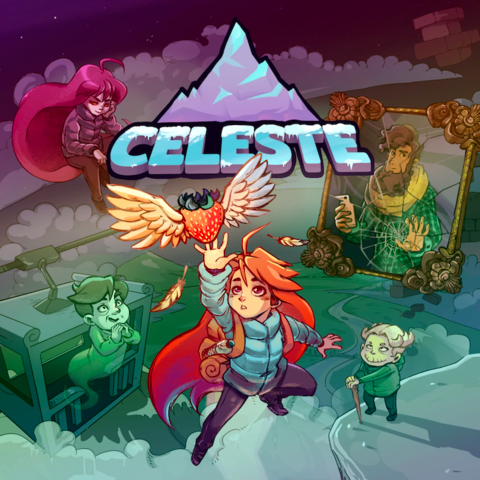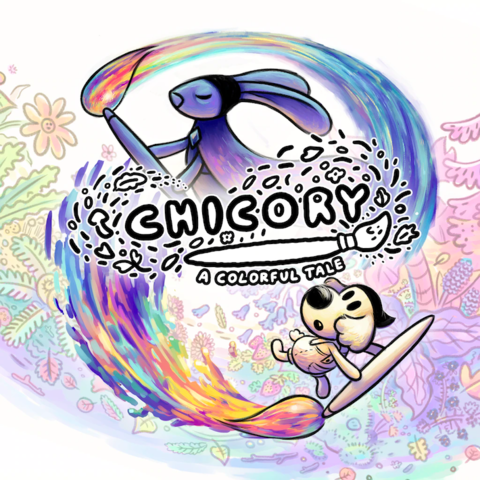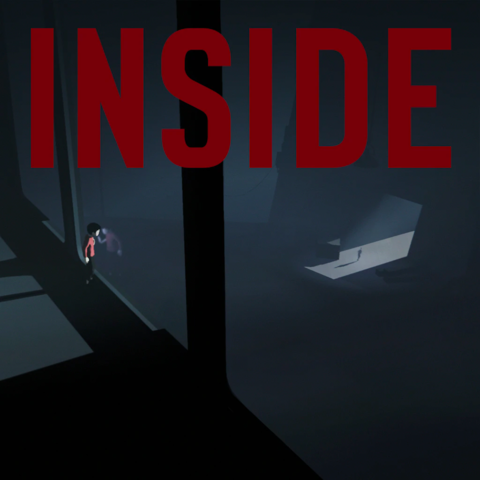|
PlayStation Network games come in all shapes and sizes. From the meditative exploration of Gone Home and What Remains of Edith Finch to the frantic multiplayer fun of Fall Guys: Ultimate Knockout and Rocket League, downloadable games can basically be anything. Though you won’t find any big AAA open-world or live service games on this list, the breadth of experiences offered on the PlayStation Store has never been wider. There’s something for everyone, and our list of the best PlayStation Network games takes all ages and skill levels into account. The list below includes shooters, roguelikes, platformers, puzzle games, adventure games, sports games, RPGs, and more. But if you don’t see what you’re looking for here, be sure to check out our lists of the best PS5 games, the best split-screen PS4 games, and the best PS4 games.  Celeste is an interesting lesson in how difficult games can provide the best of both worlds. On the one hand, it’s a tough-as-nails platformer, a la Super Meat Boy, where your death count may well climb to skyscraping heights. On the other hand, developer Extremely OK Games is deeply committed to accessibility, allowing players to tweak the difficulty of their game experience as much or as little as they want, with the option to turn on invincibility, give yourself unlimited jumps, and more. This approach feels fitting for a game, like Celeste, that provides a sustained look at mental health and what failure and success mean for different people. Additionally, Celeste also feels great to play, with some of the best platforming you’ll find in a game not developed by Nintendo, and creative levels that take full advantage of protagonist Madeline’s jump and dash. The mood in each of those levels is set masterfully by Lena Raine, whose soundtrack contains some of the best retro-inspired music you’re likely to hear. See our Celeste review. This adorable Zelda-like adventure game swaps out the sword and bow for a puzzle-solving paintbrush. Chicory is set in a world called Picnic where artists called Wielders alter the aesthetic of the world with a magic paintbrush. At the beginning of the game, the latest Wielder has abandoned their calling and you take up the mantle and the magic brush. Brush in hand, you’ll accomplish tasks for the denizens of Picnic, leaving a trail of paint behind you (which conveniently lets you know which areas you’ve already visited). It’s a stellar game, with brain-tingling puzzles and a story that will tug at your heartstrings. See our Chicory: A Colorful Tale review. With striking hand-drawn art inspired by the rubber hose animation of Max Fleischer and early Disney cartoons, Cuphead is as inviting as it is deceptively deadly. You will die many, many, many times before you reach the conclusion of this 2017 run-and-gun platformer. The name of the game here is pattern recognition as you, by yourself or with a friend, guide Cuphead and his pal, Mugman, through a series of punishing (but lavishly animated) boss encounters and occasional platforming shooter levels that take cues from Contra. Though anyone can admire the art, Cuphead is, decidedly, not for the faint of heart. See our Cuphead review. A punishing roguelike with a striking look and distinct side-on perspective, Darkest Dungeon is, as the title implies, a brutish and dark game with tons of depth to keep players invested for a long time. Released in 2016, this strategic RPG boasts an art style inspired by medieval woodcuts and a risk-reward approach to dungeon-delving, where team composition and team lineup (literally, your characters are presented in a right-to-left line on screen) require deep and consistent thought. Characters are plentiful and each has different strengths and weaknesses to consider as you compose a party. In fact, planning a run is just as important as executing it, though no amount of planning can prepare you for everything that you’ll encounter in Red Hook Studios’ procedurally generated dungeons. But anticipating every eventuality, and knowing when to retreat if you failed to do so, is part of the fun in this tense and surprising role-playing game. See our Darkest Dungeon review. A standalone multiplayer expansion to Klei Entertainment’s mega-popular survival game, Don’t Starve Together expands the player count and ups the ante. The objective is simple: don’t starve, but you can accomplish that goal in a variety of ways. Establish farms to grow food, mine resources, fend off wild animals, and take on seasonal bosses. Klei’s hand-drawn art style looks great here, and Don’t Starve Together’s procedurally generated world is endlessly explorable. See our Don’t Starve review. A surprisingly massive hit for developer Mediatonic when it launched in 2020, Fall Guys takes a bunch of obstacle courses and minigames that wouldn’t feel out of place in Mario Party, then adds a bunch of bean-looking bipeds, and makes them compete for a crown in Battle Royale fashion. One of a few multiplayer games--like Phasmophobia and Among Us--to get a big pandemic boost from bored quarantined players, Fall Guys is simple, but fun, with wins coming on the back of skill and ample amounts of luck. The physics are wild, too--don’t be surprised if you lose a round when your bean repeatedly gets yeeted off the map. Mediatonic is still updating the game a year later, which means plenty of new obstacles for new and returning players to contend with. See our Fall Guys: Ultimate Knockout review. This walking simulator created by former BioShock 2 developers kicked off years of debate about what makes a game a game. “Is Gone Home even a game?” players asked. Yes, and a really good one, at that. Developer Fullbright took the principles that guided the environmental design of immersive sims like Deus Ex and Thief: The Dark Project, stripped out the combat and stealth, and moved the action to the fairly mundane setting of an empty family home in the Pacific Northwest. You are Katie, a college kid visiting her family for the first time since they moved into a new house, and suspiciously, none of them are around. Gone Home communicates the powerful story that follows almost entirely through snooping and voyeurism. You will get to know these characters, not through cut scenes or dialogue, but through the crumpled up notes and personal effects they left behind. See our Gone Home review. A roguelike for people who don’t like roguelikes, Hades places greater emphasis on characters, story, and general forward momentum than basically any title in the genre that came before. Exiting Early Access in 2020, indie developer Supergiant’s fourth game cast players as Zagreus, the discontented son of Hades, who has decided to escape from the underworld or die (over and over and over again) trying. With rock solid isometric action combat, flashy abilities, a brilliantly told story, and hooky RPG progression, Hades proves that the roguelike has massive crossover appeal, provided the procedural elements are balanced by an author’s expert hand. The team at Supergiant has never worked in the same genre twice-Hades is the studio’s first roguelike and its first Early Access game-- but the studio delivered a game so confident, beautiful, and fun to play that you would think they had been making games like this for decades. See our Hades review. A story-driven about the romance and intimacy between two lovers who crash land on an alien planet called Source, Haven is a unique and strongly written indie RPG. Yu and Kay, the story’s central lovers, must work together to survive, frequently venturing out from their spaceship, Nest, in order to find supplies, clean up rust and heal hostile creatures by defeating them in combat. This cooperative sci-fi shooter, heavily inspired by Starship Troopers, has now brought bug-squishing action to three generations of PlayStation owners. The four-player twin stick shooting gameplay is delightfully (and sometimes panic-inducingly) hectic as you attempt, usually unsuccessfully, to avoid shooting and/or crushing your teammates due to the game’s friendly fire. That’s not the only difficulty, though, as much of your time will be spent managing your meager ammo and slot-based Stratagems. See our Helldivers review. Drawing heavy inspiration from the Dark Souls series, Hollow Knight is a 2D Metroidvania that, through its punishing mechanics and dark art style, builds a strong sense of setting. This is a world that is worth exploring, with secrets to uncover, hidden connections to make, and abilities to unlock. Combat is tense and platforming is precise. Creative bosses and tough platforming gauntlets await in the hand drawn depths, and a full sequel called Hollow Knight: Silksong will probably even still come out at some point. See our Hollow Knight review. An intense top-down shooter that demands tactical thinking and quick reflexes, Hotline Miami is a smart and brutal piece of work. With a striking aesthetic, challenging gameplay, and memorable soundtrack, Hotline Miami is the ultraviolent pixel-art shooter to beat, even nine years later. See our Hotline Miami review. The less we tell you about Inside, the better. Playdead’s 2016 follow-up to Limbo is as darkly atmospheric as fans of the Copenhagen-based studio had come to expect, casting you as a nameless child running through a terrifying and violent world where men with guns attempt to shoot you, pigs possessed by strange, controlling leeches charge at you, and vicious dogs try to rip you to bloody shreds. Set in dark woods, a dystopian city, a flooded cavern, and a sterile laboratory, Inside is mysterious and cinematic, evoking a world that you might--against your better judgment--like to visit, but where you certainly wouldn’t want to live. Stellar platforming controls and wonderful level design ensure that, while the world may be foreboding, it’s always a joy to explore. This dark odyssey all builds to a climactic conclusion so gruesome, pointed, and unsettling that we haven’t forgotten it five years out from release and doubt that we ever will. See our Inside review. That Game Company’s masterpiece of asynchronous multiplayer design is a study in loneliness and cooperation. Exploring this desert world of sand and rock is emotionally impactful, no matter how many times you experience the sensation of gracefully gliding through its distinct landscapes. See our Journey review. The game that put Bloober Team (Observer, The Medium, Blair Witch) on the map, Layers of Fear is a first-person horror game where you can trust no one, not even the world around you. Set in a well-realized abandoned Victorian mansion setting, Layers of Fear casts you as a painter, and its world is, fittingly, one of ever-changing shapes and shades. Like all of Bloober Team’s games, Layers of Fear is divisive. But, for the players it works for, it really, really works. See our Layers of Fear review. With the option to play in and out of VR, Rez Infinite is the definitive version of the classic rhythm shooter. Designed by Tetsuya Mizuguchi, who would go on to lead development on Tetris Effect, Rez Infinite is, like its block-arranging descendant, an immersive, all-encompassing experience. Though the gameplay isn’t too complicated--it’s a rail shooter at its core--Rez Infinite proves that there’s more to the whole than the sum of the parts. See our Rez Infinite review. An important inclusion on this list as Rocket League was catapulted to success by its inclusion as a free PlayStation Plus game. That isn’t to say it wouldn’t have found success otherwise, though; who can resist the appeal of a game where you play soccer as a speedy car? Easy to pick up and play but endlessly deep, Psyonix’ multiplayer sports game manages to capture the feeling and physics of soccer in a way few games have before or since. Six years later, the game is still receiving regular support and attention as a successful eSport (and, after Epic Games’ acquisition of Psyonix, completely free-to-play). See our Rocket League review. Shovel Knight is the retro 8-bit platformer as you remember it. This is a game that could not have existed on the NES, or even the SNES, but that nonetheless captures the feeling of jamming the DuckTales or Super Castlevania IV cartridge into your console and watching as the afternoon flies by. Shovel Knight has a whopping four campaigns, all of which are included in the Treasure Trove package. See our Shovel Knight reviews.
How do you make a sequel to the “perfect game?" Mossmouth answered that question by making a game that was pretty similar to the original Spelunky, the action-platformer roguelike that gave rise to a million other action-platformer roguelikes, but with enough new additions to keep returning fans interested. New, creative biomes, tameable mounts, and turkeys that can be killed and eaten for bonus HP are just a few of the new twists Derek Yu and team put on the old Spelunky formula for this 2020 sequel. See our Spelunky 2 review. The Harvest Moon series has gone through creative droughts and weirdness around the licensing--the original developer, Marvelous, is now making the Story of Seasons games, while publisher Natsume toils on soulless Harvest Moon games in their absence--but Stardew Valley is Stardew Valley. This 2016 farming RPG takes everything Harvest Moon did well and repackages it from a fan’s perspective without the baggage. Developer Eric Barone, smartly, gives players an overarching goal--restoring the derelict community center--then populates the world with so many fun things to do (farming, fishing, arcade games, romance, dungeon-crawling, and more), that you always have big and small goals to accomplish. See our Stardew Valley review. “Time only moves when you move.” It’s a terrific conceit, and Superhot Team has now built three games around it: Superhot, Superhot VR, and Superhot: Mind Control Delete. The first of those, the developer’s 2016 debut, took the control scheme of the first-person shooter and applied it cleverly to a puzzle game framework. Superhot is much less about fast reflexes and twitchy aim-down-sights ability, and much more about learning how to strategize your way through a fight where the odds are stacked against you. The only advantage you have on your opponents is that you can move in bullet time, like Neo in The Matrix, which is a pretty cool advantage, to be honest. See our Superhot review.  It’s easy to pigeonhole Terraria as “2D Minecraft,” but Re-Logic’s side-scrolling action-platformer/sandbox survival game is more than the sum of its recognizable parts. Though… they certainly are recognizable parts. Dropped into a procedurally generated world, you (and a group of friends if you want) explore fully destructible environments which can be broken down into component parts you can use to build a vast array of items, weapons, buildings (which, together, can form helpful villages) and more. As in Minecraft, the world is mostly safe by day, and populated by dangerous creatures at night. With imposing enemies to vanquish (the eyeball monsters are especially freaky), massive underground cavern networks to explore, and an impressive suite of creative tools, Terraria invites players to dig deep (metaphorically and literally). Don’t be surprised if you have a hard time stopping yourself from investing hundreds of hours into this compulsively playable creative survival game. See our Terraria review. Developer Drool dubbed their creation a “rhythm violence” game and who are we to argue? Thumper is a rhythm game for people who want to be stressed out and white-knuckling a controller while throbbing music assaults their eardrums. Controlling a silver-plated beetle, or something, you move along a track as frightening psychedelic visions play out around them. While most rhythm games ask you to pretend to play an instrument or tap buttons in time to the beat, Thumper has you lurching aggressively from side-to-side. Part rollercoaster, part mosh pit, part Lovecraftian fever dream, Drool’s 2016 release remains a brilliantly unique game in the music game space. See our Thumper review. A frantic multiplayer game from the people who made Celeste, TowerFall Ascension is as fun and frenzied as it gets. This four-player local multiplayer game pits a quartet of combatants against each other in kill-or-be-killed archery battles. The maps are small and the graphics are old-school, but TowerFall Ascension wrings massive amounts of fun out of its self-imposed limitations. Nothing beats dashing into an opponent's oncoming arrow to grab it, then taking them down with their own ammunition. It’s thrilling stuff, and match rules can be modified in a variety of ways, so no matter how long you play, the game retains its easy to pick up, hard to master charm. See our TowerFall Ascension review. What Remains of Edith Finch takes the basic premise of Gone Home--a young woman visiting an abandoned family home in the Pacific Northwest--but makes the missing family members present, not through notes and personal effects, but through short, playable vignettes. That might mean playing through a horror story rendered in comic book panels with cel-shaded art. It also might mean witnessing, through a camera lens, a traumatic hunting trip where the plot only advances when you snap a picture. What Remains of Edith Finch is relentlessly inventive on the level of its individual stories, but also manages to build to a powerful conclusion that ties everything together. It can be completed in an afternoon, but you’ll remember it for years after you play it. Oh, and, Lewis’ “cannery sequence” is one of the best levels we’ve ever played in a game and, four years later, there is still absolutely nothing like it. See our What Remains of Edith Finch review.
|





























